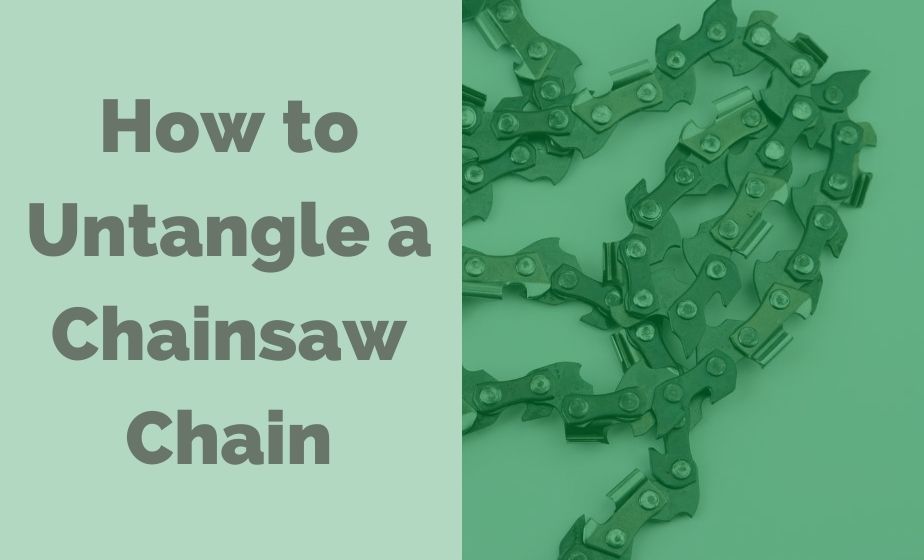A carburetor is a device that mixes fuel with air before it enters the engine. A clean carburetor makes your saw more fuel-efficient and runs cleaner, which increases its life expectancy. Cleaning a chainsaw carburetor is also important because a clean carburetor will help to achieve maximum power from the saw.
The chainsaw engine needs air and fuel to run well. Sometimes, that makes cleanup a bit tricky. If you don’t know what you’re doing, you might end up damaging your chainsaw’s carburetor. In this guide, we’ll show you how to take care of your chainsaw’s carburetor, even if you think it’s hopelessly dirty.
5 Best steps to Clean a Chainsaw Carburetor
It’s essential to keep your chainsaw’s carburetor in good order. Not only can it cause a serious problem while you’re working, but our step-by-step guide will teach you how to clean it properly.
1.Clean the Air Filter of Carburetor
A dirty or clogged air filter may just stop working. When you notice this, always remember to clean it with a liquid cleaner. You may need a liquid or a spray liquid to clean a metal filter, but you should replace paper filters if you wash them in liquid.
2.Wipe the air intake components
If your saw doesn’t start, it might be because of residue. This residue can be as clear as gold and as thin as a sheet. It might coat the air intake surfaces, which might happen because of long periods. This type of residue is usually easy to spot and can be removed with a bit of help from a spray cleaner.
3.Wash the Needle Valves
When your propane-powered machine won’t restart, here’s what to do: Check the needle valves for gumming. That is likely to happen when you top up the fuel tank. Clean and dry the valves and return them to their original position.
4.Activate the Pull Cord
To remove stubborn residue, give your pull cord a firm tug and some slack. That will create a liquid cleaning agent that can get into the nooks and crannies. To remove the build-up from the gas tank, yank the cord with force and then release it for example, if. Repeat this process to clean your cord.
5.Use Fresh Fuel Gas
Fuel is a mix of substances that releases energy for your engine to use. Unfortunately, sometimes these substances can mix and cause problems. To fix this, just remove the old fuel and replace it with fresh fuel.
If the new fuel doesn’t have any contaminants, it will fix many of your engine’s issues. But sometimes, there’s nothing you can do. If you can’t fix your chainsaw and it turns out the fuel was the problem, you should take the time to go to a specialist who can examine your engine and repair it.
How to Adjust a Chainsaw Carburetor
Chainsaws have a carburetor that needs adjustment from time to time. For this, you will need to consult the manufacturer’s manual and general advice from online resources. But, again, there are plenty of resources out there that can help you through the process.
- Tune-up your chainsaw just like the pros! There are universal standards to follow, and you can find instructions from the manufacturer for your model. It’s okay if you’re not sure where to start. There are plenty of resources that can walk you along the way to tune up your chainsaw.
- You’ve made the changes; the screws a full turn and lean into the fuel mixture by twisting it in a clockwise motion. Keep adjusting the screw with your fingers and listening for a flutter. That is your perfect RPM for your chainsaw!
- A quick test with the throttle is to check for chain movement while the chainsaw is off. Chains don’t usually move while they’re off, so if the chain isn’t moving while the saw is on idle, this could be an indication that there’s a problem.
- A more thorough way to check the oil on your chainsaw is to do the roll-over test. Startup your chainsaw and then cut it off. While the blade is idle, start it up again and watch for any smoke.
- When the saw stalls, the machine is getting too much oil which can lead to damage. The solution is to decrease or stop oil flow by turning the low-speed screw counter-clockwise.
- If you’re not sure how to adjust your carburetor, always go to the manufacturer’s website for help. You’ll find lots of detailed instructions and helpful videos.
How to Clean the Carburetor on a Stihl Chainsaw
Stihl chainsaws are often used for jobs that require clean airflow. Unfortunately, if debris or dirt gets past the air filter, it can clog the carburetor. Left untreated, this will eventually cause engine damage. However, there is an economical, easy solution to clean out any Stihl chainsaw’s carburetor.
- Release the chainsaw by removing the bar and chain with the wrench that comes with it.
- Remove the cover that contains your filter with your screwdriver, unscrewing it.
- Turn on the chainsaw to start cutting.
- To hold a chainsaw, put your hand on the handle with the blade pointed away from you. The engine should be at two-thirds.
- To remove the air filter, it’s essential to remove the carburetor spray cleaner. Once the carburetor spray has been removed, take one second to spray the carburetor cleaner in the space where the air filter was. The carburetor cleaner will dissolve any gunk in the space, which may have been clogging it.
- This process is the last step of the total clean (after you’ve taken the machine apart and put it back together). Extend a one-second blast, let the motor run for a bit, turn off the sprayer and re-attach the hose. They should keep spraying until the motor runs out of gas.
Final Thoughts
Chainsaws are essentialUnfortunately, if for many reasons, maintenance is among the most important. Chainsaws require some maintenance to keep them running efficiently. That’s why we’re going to give you some tips on how to clean your chainsaw carburetor. We hope this guide will help you clean your Carburetor. If you have any queries about Chainsaw Carburetors, please leave a comment below, and we’ll get back to you within two days.



